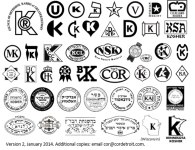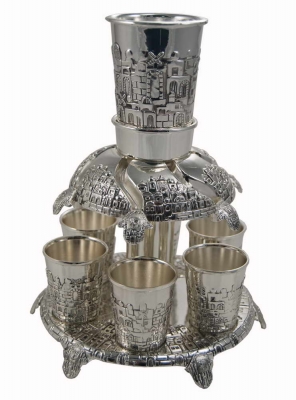This is another attempt at a series on my blog, intended for use when lockdown has lifted, the pandemic has passed, and people are going to events and one another's homes safely. This is a series of blog posts (which will be linked as they are posted) intended to help gentiles invited to Jewish events. Although some of this advice may apply elsewhere, this is written from the context of American Judaism. This advice is not aimed at any particular denomination and will likely apply to more liberal strains of Judaism (Reform, Reconstructionist, Conservative) and less so to Orthodox.
Invited over to a Bar Mitzvah (#2)
It's too thick to be a regular card, but probably not thick enough to be a wedding invitation. You've received an invite to a Bar (boy), Bat (girl), or Bnai (more than one child or nonbinary) Mitzvah for some relative, friend, or another Jewish preteen in your life. Now what?
1. Bar/Bat/Bnai Mitzvot celebrate the entrance into Jewish adulthood, at about age 12/13. Sometimes adults, particularly women, who were unable to have them as children have a ceremony, but most Jewish people now do it sometime in middle school.
Girls are able to have their ceremony starting at twelve, boys at thirteen. Why? It's just how it's done. Technically speaking,
reaching on their twelfth or thirteenth birthday makes a Jewish person a Jewish adult, but much ceremony and tradition have grown up around the milestone. As an aside, we don't think 12/13 years olds count as adults in any other way, just in the sense of being responsible for one's Jewish actions.
Not all girls have their Bat Mitzvah at twelve and nor do all boys have their Bar Mitzvah boys at thirteen. Some lenient congregations allow slightly younger children to have ceremonies, and much more common is the Bar/Bat/Bnai ceremonies well after the twelfth or thirteenth birthday. I (a girl) was several months past thirteen at mine, and this was within the typical time frame. As mentioned, there are adults who chose to have ceremonies (my grandma had hers in her forties because in the 1960s orthodox-ish that wasn't an option), but it's much more common in the U.S. these days to have it sometime in middle school or early high school.
In any case, a service/ceremony and a party are very common and are usually sometime in middle school. Within orthodoxy and particularly within Haredi Judaism women are less likely to have Bat Mitzvah ceremonies, although it s becoming more common in some communities. However, in more liberal groups (Conservative/Masorti, Reform, Reconstruction, Nondenominational/Postdenominational), it's the norm that girls have Bat Mitzvah ceremonies.
From here on out in this post, "Bar Mitzvah" will be used to collectively refer to Bar, Bat, and Bnai Mitzvahs.
 |
| My sister (brunette) and I (pink hair) at her Bat Mitzvah in 2013. |
2. The service and the party are often separate.
Although not universal, the most common arrangement is to have a separate party in the afternoon or evening after the service in a different venue. Some people choose to have a trip with family instead or have the party at the synagogue, but in respect of the restrictions synagogues often have on activities in the building and the fact that guests may be Shabbos-observant, parties are usually held after the service at night and at a separate venue. Sometimes there might be a party a week or two later, but the most typical thing is Saturday night after.
Although not commanded in the Torah, the Bar Mitzvah service and ceremony as we know it has a fairly standard set of events of expectations. One of these expectations is that the child reads from the Torah, not just any Tanach (bible) book but the physical Torah Scroll itself, usually in a synagogue. Since Torah services are usually only conducted on Mondays, Thursdays, and Saturdays, this narrows the times that Bar Mitzvah ceremonies can happen. Consequently, Saturday mornings are when almost all Bar Mitzvah Ceremonies happen.
Since it's not technically a commandment there's some wiggle room on what to do during the service, but there is a fairly standard set of events that happen. The Bar Mitzvah celebrant will usually read a portion from the Torah, give a Dvar (an interpretation of the reading), in the lingua franca of the congregation, carry the Torah around, and lead certain prayers. Additionally, family and friends close to the person being Bar Mitzvah-ed will have honors as well, ranging from opening and closing the ark (which contains the Torahs), to reciting certain blessings, to helping give out programs. If you are close to the Bar Mitzvah person, you may be asked to help out with something, but that's a more in-depth post for another time.
 |
| Me posing with the Torah as if reading at the picture session we did the day before my ceremony. |
The service is usually sometime in the morning, probably technically starting around 8:30-9:30 and ending sometime around noon or 1 p.m. (more on that in a minute), followed by a brunch. Sometimes the party is instead of the brunch (also called an oneg) that is right after. If the oneg and party are separate, the party will usually be that night after sunset.
3. Unless you are a close friend or family member, money is more common than physical gifts.
If you have some super cool gift idea for someone you really know or some specific gift to help with the party, great. It's very acceptable, however, to give checks or cash. Denominations of $18 (although usually starting at $36) are common because eighteen is a lucky number in Judaism. For an acquaintance or family friend, $25, $36, $50, or $54 is appropriate. For closer friends and relatives larger sums are appropriate. If the person is someone you are closer with and you want to gift a little bit more, $118 or $120 are also lucky numbers.
4. Try not to give the money in the synagogue.
Although not a problem most days, it is frowned upon to exchange money on Shabbos, and most synagogues prefer you don't hand checks or cash to the Bar Mitzvah kid on Shabbos in their spaces. You can mail it to them before or after, save it for the party, or be discreet in your hand-off. If you are giving your gift at the brunch after the service, then make sure it's in an envelope. The Bar Mitzvah kid is probably a little busy, so you can give it to their parents if the recipient themselves isn't available.
5. Be aware and courteous of the synagogue's policies and customs on photo-taking, seating, and contact.
It's also frowned upon in many synagogues to take pictures or videos during services. Most folks do pictures the day before or the day after out of respect for Shabbos. In some Reform and Reconstructionist synagogues cameras are allowed, but generally speaking, it's kind of tacky. If photos are allowed in the synagogue on Shabbas, there's probably a photographer or close family taking the pictures, you don't need to. On a related note, it's pretty tacky to have your phone out during the service to text, as I imagine it is in most houses of worship. If you have to take a call or there's an emergency text, step out of the sanctuary and into the lobby.
Like taboos on photography, seating also varies by congregation and denomination. What I mean by this is that adult men and women are separated during the services. This is the norm in orthodox synagogues, but not practiced in more liberal denominations of Judaism. If you are in an orthodox synagogue, there will be a men's section and a women's section. Kids (under 12/13) are free to float between either. Sometimes one section will be behind the other, and sometimes it will be side by side with some sort of barrier between them. If there is gender-segregated seating, it will be obvious.
The other faux pas to be aware of in orthodox congregations is physical contact between men and women. This doesn't apply in non-orthodox settings, but for many orthodox Jews physical contact between non-related adult men and women is taboo, so if someone of the opposite sex isn't comfortable shaking your hand it really isn't personal.
5. You rarely show up to synagogue at the time on the invitation.
Jewish services are
long. The absolute minimum, in the most liberal reform and reconstructionist synagogues, would be one and half to two hours for a Bar Mitzvah. Most run closer to 3-4 hours, and in the U.S. generally the more traditional the denomination the longer the service. The good news is that while the service may start at 8:30 a.m., it is neither the norm nor expected that guests arrive at that time. The invitation may indicate the time guests are expected to arrive, or you can ask whoever invited you a good time to aim for. In my experience, most guests at a Bar Mitzvah trickle in somewhere in the neighborhood of 9:30-10:00.
A Saturday morning service is actually usually several services combined into one: Shacharit (morning), Torah, Musaf ("extra"), and Mincha (afternoon). The Torah service, which is the portion the Bar Mitzah celebrant is most involved with, usually lands around 10:15. Even if services technically start at 8:30 or 9:00 a.m., it doesn't mean that everyone is there at that time. It's not rude or wrong to be there for the whole thing, but as a guest, it's not really necessary.
If the invitation has a super early time on it, it's okay to ask when the Torah service is or what a good time to arrive is. This isn't a hard-and-fast rule, but I'd say if you arrive by 10:00 a.m. you're fine. If you have an honor or part in the ceremony, make sure you know approximately what time that's at so you are there for it.
6. Dress more "Sunday Best" than "Come as you are" for the synagogue.
My observation is that many American churches often have a relatively lax dress code. No judgment, but that's not how most synagogues work. Think of a more traditional Sunday best, a nice dinner, or business casual. Outside of orthodox congregations, women can wear dress pants, but anecdotally, I would say skirts and blouses and dresses are more common. Men should wear dress pants and a dress shirt or button up-you don't need a suit.
Additionally, The more traditionally observant the denomination, the more modest you need to aim for. For most synagogues, you should be covering shoyour ulders and above the knee if not the knee. If a dress or skirt is a little short then tights are helpful. Shrugs and cardigans also come in handy for sleeveless shirts and dresses. Colorful clothing and patterns are acceptable, but excessive cleavage and sheer clothing should be avoided.
In most synagogues, men and boys are expected to wear a kippah (plural kippot), regardless of whether they are Jewish or not. Outside of orthodox settings, women are permitted but not required to wear them. The synagogue will have them available, you do not have to provide your own. In fact, many families will make commemorative kippot for the occasion with the name of the Bar Mitzvah and the date it happened.
7. The party is roughly equivalent to a Sweet Sixteen, Quinceanera, or other big birthday celebrations.
There are some Jewish touches, like specific songs (including the Horah, the "chair dance") and the food may be kosher, but expect something comparable to a younger Sweet Sixteen. Some people have fancy parties, and some people have more kid-focused parties. Unless it's explicitly an outdoor or otherwise messy event, think fancy dress for the party. Depending on the venue, you should be aiming for somewhere between business casual and cocktail attire.
These seven things don't cover every little detail, but they are good basics for you to know as a guest, and can help you find the right questions to ask whoever invited you. At the end of the day, it's a celebration - Have fun!







